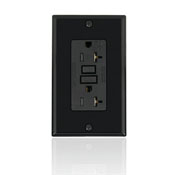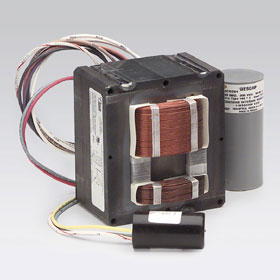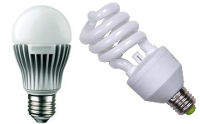Author Archive
Ground Fault Current Interrupters
Ground Fault Circuit Interrupters (GFCI) have been part of the NEC code for over 40 years now and just like your car, things have changed. Over the years the code has changed but also makers of GFCI and Underwriters Laboratories (UL) have made a lot of good changes. Life saving changes that probably nobody except a few electricians have noticed. Today, most people just think of the GFCI in their bathroom or kitchen and will probably never know all the great GFCI that are available.
Today, the s tandard GFCI that you see in your wall is either 15 or 20 amp and the most noticeable feature you see is a light, usually a little green light. If you don’t see the light or the light has changed colors then your GFCI will not work. What you don’t see is that GFCI are self testing every 15 minutes. A trip can be reset, but a failed GFCI will not reset and you will have to replace the GFCI. Another feature is that the GFCI comes from the factory in the tripped position and if it is mis-wired you will not be able to reset the GFCI until it is corrected.
tandard GFCI that you see in your wall is either 15 or 20 amp and the most noticeable feature you see is a light, usually a little green light. If you don’t see the light or the light has changed colors then your GFCI will not work. What you don’t see is that GFCI are self testing every 15 minutes. A trip can be reset, but a failed GFCI will not reset and you will have to replace the GFCI. Another feature is that the GFCI comes from the factory in the tripped position and if it is mis-wired you will not be able to reset the GFCI until it is corrected.
 Did you know there are tamper resistant receptacles and GFCI? Now manufacturers make tamper resistant GFCI for your children’s bathroom. These meet the same stringent requirements of a standard GFCI, but now somebody cannot just stick something conductive into any slot of the GFCI. Now you can sleep better at night knowing your kids are safer. The tamper-resistant receptacles and GFCI have been NEC code since 2008 but not all municipalities are enforcing it yet.
Did you know there are tamper resistant receptacles and GFCI? Now manufacturers make tamper resistant GFCI for your children’s bathroom. These meet the same stringent requirements of a standard GFCI, but now somebody cannot just stick something conductive into any slot of the GFCI. Now you can sleep better at night knowing your kids are safer. The tamper-resistant receptacles and GFCI have been NEC code since 2008 but not all municipalities are enforcing it yet.
Now you can buy weather resistant GFCI. It will still have to go in a weather resistant cover or even a bubble cover. Weather-resistant GFCI are made to go outside, being able to take extreme temperatures, UV and moisture. The weather resistant GFCI are also made with the tamper resistant feature.
Faceles s GFCI are also made. This is just GFCI made with only the test and reset buttons, no receptacle built in, like it’s name implies.
s GFCI are also made. This is just GFCI made with only the test and reset buttons, no receptacle built in, like it’s name implies.
Another faceless GFCI is the high current GFCI which can handle up to 80 amps at 240 volts. These feature a current sense transformer called a donut which is powered by 120 volts. If you need a GFCI for your spa or equipment and cannot find a breaker, then these will come in handy. The high current GFCI should only be installed by a licensed electrician.
Do you need a night light or a guide light? GFCI are made with a receptacle and a light. A photo sensor turns the light on and off. How about a pilot light with your GFCI? The light comes on when there is a load on the GFCI. Comes in handy in basements with sump pumps. All the lights are LED for low power consumption and long life. Do you need a switch and the only room is a GFCI? Replace the GFCI with a combination switch and GFCI. The switch is independent of the GFCI and can turn on that vent or light. These combination devices can also be purchased with the tamper-resistant feature and no safety feature has been removed.
There are other GFCI made like extension cords with GFCI, or GFCI that can be wired in as the plug of an extension cord. Panel mount GFCI are available for sump pumps, generators or temporary power.
While this might not have been the most exciting read you’ve had today, I hope that this might help on your next DIY Home Improvement Project.
Enjoy the blog? What to be a part of the action? There are many ways to Contribute to the Blog.
Arc Fault Breakers
Before we get into Arc Fault Circuit Interrupters (AFCI), let’s look at their uncle, the Ground Fault Circuit Interrupter (GFCI). GFCIs first appeared in the NEC code in 1971, and then only for swimming pools (not spas) and exterior outlets. Today, bathrooms, kitchens, wet bars, garages, rooftops, spas and any place that water can be a problem must be protected by a GFCI according to code. Without getting into what a GFCI does, it basically can save your life. This has been proved over and over, and unfortunately also proved when GFCIs have been removed, tampered with, or failed.
Let’s start off with some questions:
What is an Arc Fault? An arc fault is when current goes through your wires and somehow takes an unintended course that produces a spark, or arc.
Why don’t my regular breakers protect me from arcs? Your breakers protect you, but what an AFCI does, that a regular breaker can’t, is detect a very low level arc. If not detected, that low level arc could quickly become a life threatening event – in your house!
Why do I need AFCIs and GFCIs? A GFCI protects you and others from fatal electric shocks when a ground fault happens, like if you try to make toast while taking a bath and drop the toaster. That would be a ground fault due to water. As explained above, an AFCI protects you and your valuables from a potential fire caused by a low level arc.
What causes arc faults? Worn or damaged wire; damaged plugs or receptacles; loose electrical connections; screws, nails or staples driven into wires; furniture pinching lamp or appliance cords; broken wire; frayed wires; and even wire chewed on by your pets. Probably anything your kids do when you’re not around. The NEC uses the term combination to describe fault protection. This covers both parallel arcs (two wires arcing together) and series arcs (arc caused by one wire arcing between two damaged areas)
Can I buy AFCI receptacles? Not at this time. Breakers will protect everything downstream from the breaker, but an AFCI receptacle would not protect the wire between the receptacle and the breaker.
Whether you need AFCIs or not depends on your local codes. Not all local codes have accepted AFCIs as code, and some might accept them but not otherwise be up to the current national code. The current NEC Code, 210.12 says “All 120-volt, single phase, 15- and 20-ampere branch circuits supplying outlets installed in dwelling unit family rooms, dining rooms, living rooms, parlors, libraries, dens, bedrooms, sun-rooms, recreation rooms, closets, hallways, or similar rooms or areas shall be protected by a listed arc-fault circuit interrupter, combination-type, installed to provide protection of the branch circuit.” Even if your local code does not call for it, you still can install AFCIs in your home. Of course, if local code requires AFCIs then they will have to be installed on new homes and remodels.
AFCIs keep improving, just like GFCIs. With these improvements, specifications change and an older AFCI might not pass on a new job, depending on when the permits were issued. Just because a breaker says AFCI on it, that does not mean it will pass inspection. Your electrician will know which ones to use and your local code office will also have that information.
Fluorescents and Legislation, Part II
The death of the Plain Jane fluorescent tube is in the cards. Lighting legislation signed into law in 2007 has been coming at us for 5 years. Fuel economy for vehicles, bio-fuels, lighting fixtures, lamps, appliances and building energy savings were all targeted, along with other items too numerous and way over my head. In 2010, manufacturers were no longer able to manufacture magnetic ballast. These were the coil and core ballast that weighed a ton.

When suppliers started to run out, your only choice was electronic ballast. You know, if you’re old like me you can remember when those ballasts stuck their heads out in the 70’s, and after all the smoke from lawsuits and finger pointing cleared, they hid their ugly heads for 25 years. In 1995, when you took your 40 watt ballast to the hardware store, it had to replaced by a 34 watt. Now when you take your 34 watt ballast in, you get this little lightweight thing to put in your fixture. “How can I be getting my money’s worth? This thing is too light!”
In 2010, if you had to change your fluorescent fixture, you had to start using those skinny tubes. “Light-weight fixtures and skinny tubes,don’t take me for a fool!” Starting July 14, 2012, the manufacturers will stop making all the old fashioned T12 lamps. With a few exceptions, when you take that 8 foot tube in your garage to get it replaced, or that wimpy 34 watt 4 foot tube in to get a replacement, not only will you have to buy a new fixture, you will also have to take the evil old lamps back with you, because they are now hazardous waste. “These kids now-a-days don’t know nuttin!”
If you are one of the few that read the “Energy Independence and Security Act of 2007” you might make heads or tails of it. If you understood it, then English must be a second language. But the good news is: it’s working for the most part. It is costing us an arm and leg, but it’s working. Now when you and I have the simple job of changing light bulbs, it becomes a major DIY project. It is costing us. Now what do we get out of it? More power. Since it has security in the title, do we get to carry a gun? Heck No!
Out of all the energy used in the US, 25% is used in homes and 19% is used in commercial buildings. It was estimated that energy use would spike 44% from 2005 to 2030. Seven years later it looks like that spike will only be 14%. If you do your math like our politicians, we will save 68%. But it’s 68% of nothing, and this time nothing is a good thing. You can look at it and say we saved 68%, or you can look at it and say we created 68%. It’s not from some new wind, sun, aluminum foil technology, it is a new technology. A technology called “Renewable Energy”.
Now, when you do your honey-dos, whether it’s caulking, insulating, installing blinds, or sitting under the shade of a tree you planted years ago, you know that you are pioneering new grounds.
On the numbers I used, I didn’t just grab the first numbers I found, I did try to check their sources. Probably the best source is EIA Annual Energy Outlook 2008.
Light Bulbs and Legislation
 I’ve been in the electrical wholesale business for almost 30 years and every day I sell light bulbs. For over 30 years lamps basically got better, offering more light output per watt on the newer lamps. But recently somebody started taking my light bulbs away. What am I going to do? What are all the old people going to use to read their papers?
I’ve been in the electrical wholesale business for almost 30 years and every day I sell light bulbs. For over 30 years lamps basically got better, offering more light output per watt on the newer lamps. But recently somebody started taking my light bulbs away. What am I going to do? What are all the old people going to use to read their papers?
Younger people tend to understand this, while other people tend to get upset that the government is getting involved in something as simple as light bulbs. Most people don’t even know it’s happening. So now I let out the secret.
GENERAL SERVICE INCANDESCENT LAMPS
|
Rated Lumen Ranges |
Maximum Rate Wattage |
Minimum Rate Lifetime |
Effective Date |
| 1490-2600 | 72 | 1,000 hrs | 1/1/2012 |
| 1050-1489 | 53 | 1,000 hrs | 1/1/2013 |
| 750-1049 | 43 | 1,000 hrs | 1/1/2014 |
| 310-749 | 29 | 1,000 hrs | 1/1/2014 |
What does this mean? On January 1st 2012, 100 watt light bulbs went bye bye. Well not really. On January 1st 2012 light bulb manufacturers could no longer make 100 watt A style lamps (table lamps) for sale in the US. Then on January 1st 2013, 75 watt A style lamps are no longer made. January 1st 2014, 60 and 40 watt go the same way. All these lamps are available until stock is depleted.
Now, why are they doing this? After reading and reading and talking to factory reps and some energy specialists, it has to do with building power plants. The more wattage and kilo-watts saved, the less power used. DUH. If energy is saved on a large scale, then enough energy would be saved to avoid building a power plant. In this age of “not in my backyard”, the legal fees would probably be as high as the cost of building the plant.
Once all the incandescent bulbs are gone, you’ll have to choose between LED and CFL.
Which to use, LED or CFL
Which is better, Compact Fluorescents (CFLs) or LEDs? I’m not the greenest person in the world and normally don’t go out of my way to be green, other than recycling trash.
Compact fluorescent
At one time legislation was going to cost you big time bucks if fluorescents, including CFLs, were broken. It was considered a “hazardous spill” and you had to open your windows; if you cleaned it up yourself you would not be able to use a vacuum or broom, only a sticky tape to clean it up. A professional team did this for a woman in Maine and after everything was done it cost her $3000.00 and insurance did not cover it. Now, it’s still not a good idea to use a vacuum because of the mercury.
Now all fluorescents are required to be recycled. Smaller recycle boxes can cost you as much as $1.50 a lamp to dispose. Some waste companies offer to be open on certain days and be available for you to bring the lamps to them. Today, with this legislation, nobody ever throws their light bulbs away (wink wink).
Light-emitting diode
LEDs are not cheap, but they are coming down in price. Right now the biggest change in LEDs is the lumens per watt, or the amount of light coming out divided by the wattage used. While the wattage on some lamps has not gone up, the light output has. It was just 2 years ago when the LED manufacturers started making lamps equal to a 75R30 (65BR30), which is the most popular residential light at the moment. Prices are starting to come down on older technology LEDs, and more and more stores are stocking them. LEDs contain no mercury, making them easy to dispose of, and no special handling, other than throwing them in the recycle bin. The energy saving is ridiculous! I just changed out 7 – 50 watt MR16 lamps with 7 – 6.2 watt dimmable lamps. That right there is a 87% energy savings, and it cuts out going up and down a ladder 56 times to change the lamps (7 lamps, 8 times). In this case, CFLs were not an option.
Now the negative about LEDs. When they first started becoming a reality in residential lighting they were advertised at 50,000 hours lamp life. Lawsuits happened, causing the big names in LEDs to start advertising 25,000 to 30,000 hours, with some lamps still rated at 50,000 hours. LEDs lose lumens over time, just like incandescent and CFLs, but LEDs lose more than 3 times that of a CFL: 29% to 9%.








